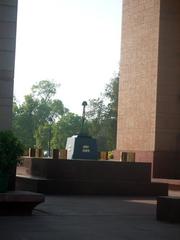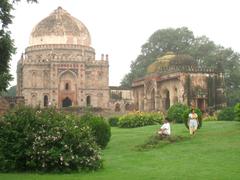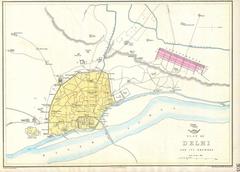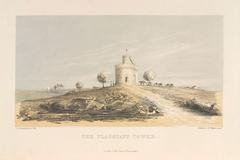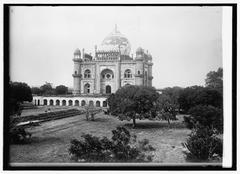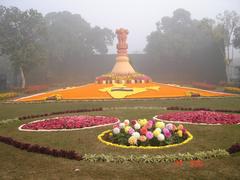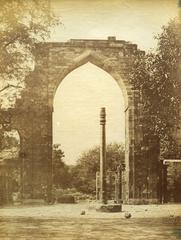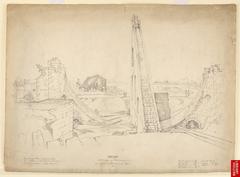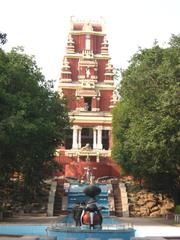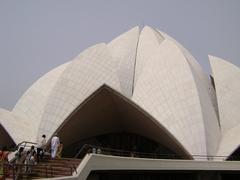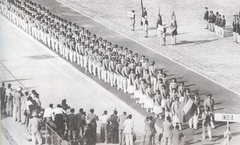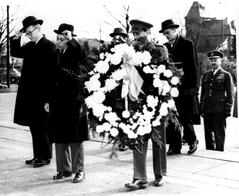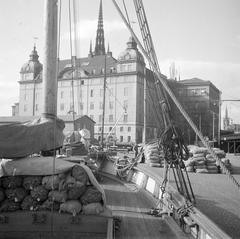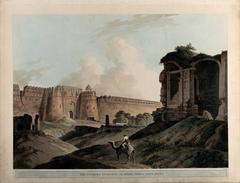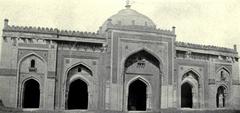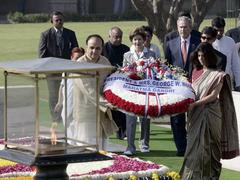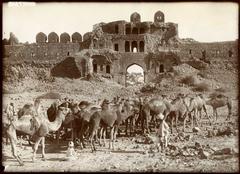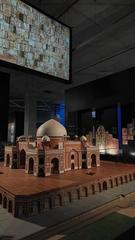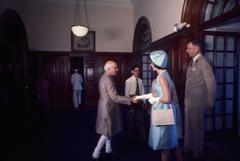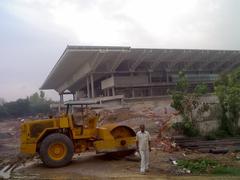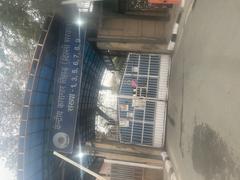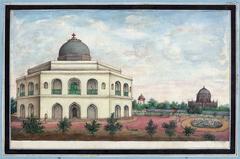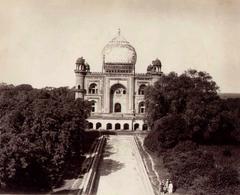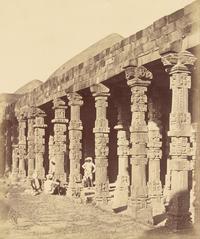Comprehensive Guide to Visiting the Tomb of Sikandar Lodi, New Delhi, India
Date: 16/08/2024
Introduction
Discover the historical and architectural marvel that is the Tomb of Sikandar Lodi, a significant monument located in New Delhi. This comprehensive guide will provide you with everything you need to know for a memorable visit, including visiting hours, ticket information, historical background, and travel tips. The Tomb of Sikandar Lodi is not just a resting place of an important ruler but also a testament to the rich cultural and architectural heritage of the Lodi Dynasty and Indo-Islamic architecture. Constructed in 1517-1518 CE by Ibrahim Lodi, this monument stands out for its unique octagonal design, intricate lattice work, and its status as the first garden tomb in the Indian subcontinent (Wikipedia, Jovial Holiday). The tomb’s influential architectural style significantly impacted subsequent Mughal architecture, making it a must-visit for history buffs and architecture enthusiasts alike.
Table of Contents
- Introduction
- Historical Background
- Architectural Significance
- Visitor Information
- Nearby Attractions
- Photographic Opportunities
- Preservation Efforts
- FAQ
- Conclusion
Historical Background
The Lodi Dynasty and Sikandar Lodi
The Lodi Dynasty, an Afghan dynasty, ruled the Delhi Sultanate from 1451 to 1526 CE. Sikandar Lodi, born Nizam Khan, was the second ruler of this dynasty, reigning from 1489 to 1517 CE. He succeeded his father, Bahlul Lodi, and was known for his administrative acumen and military prowess. Sikandar Lodi expanded his empire significantly, stretching from Punjab to Bihar, and even entered into a treaty with Alauddin Hussain Shah, the ruler of Bengal (Jovial Holiday).
Architectural Patronage
Sikandar Lodi was not only a formidable ruler but also a patron of art and architecture. His reign saw the construction of several architectural marvels, including the founding of the city of Agra in 1503 CE. His contributions to architecture are evident in the design and construction of his tomb, which was built by his son, Ibrahim Lodi, in 1517-1518 CE (Wikipedia).
Architectural Significance
Construction of the Tomb
The Tomb of Sikandar Lodi was constructed by his son, Ibrahim Lodi, as a tribute to his father. The construction took approximately one year and involved hundreds of skilled craftsmen working tirelessly to complete the design. The tomb is situated in the Lodhi Gardens in New Delhi, which was formerly a village called Khairpur (Jovial Holiday).
Architectural Design
The tomb is an exemplary representation of Indo-Islamic architecture, featuring a double dome, an octagonal chamber, and a veranda with arches. The central dome is adorned with intricate lattice work and calligraphy, showcasing the fusion of Persian and Indian architectural styles. The tomb’s design was inspired by the tomb of Muhammad Shah, an earlier ruler of the Sayyid dynasty, also located in the Lodhi Gardens (Delhipedia).
First Garden Tomb
One of the most remarkable aspects of the Tomb of Sikandar Lodi is its status as the first garden tomb in the Indian subcontinent. The enclosed garden surrounding the tomb, with its meticulously landscaped greenery and serene ambiance, adds to its charm and tranquility. This garden tomb concept was later popularized by the Mughals, most notably in the construction of the Taj Mahal (Delhipedia).
Cultural and Historical Impact
The Tomb of Sikandar Lodi stands as a testament to the rich cultural and historical heritage of the Lodi Dynasty. It attracts historians, architects, and tourists who are interested in exploring the architectural and historical legacy of the Delhi Sultanate. The tomb’s location in the Lodhi Gardens, a popular recreational area in New Delhi, makes it accessible to a broader audience, contributing to its continued relevance and preservation (Audiala).
Mughal Influence
The architectural style of the Tomb of Sikandar Lodi had a lasting impact on subsequent Mughal architecture. The use of garden tombs, intricate lattice work, and the fusion of Persian and Indian styles were later seen in the construction of other significant monuments, including Humayun’s Tomb and the Taj Mahal. This influence underscores the importance of Sikandar Lodi’s contributions to the architectural heritage of India (Lonely Planet).
Visitor Information
Visiting Hours
The Tomb of Sikandar Lodi is open daily from 6:00 AM to 7:30 PM, allowing ample time for visitors to explore its historical and architectural beauty.
Ticket Information
Entry to the Tomb of Sikandar Lodi is free of charge, making it an accessible and budget-friendly attraction for all visitors.
Accessibility
The Tomb of Sikandar Lodi is located in the Lodhi Gardens, bounded by Amrita Shergill Marg in the West, North-West, and North, Max Mueller Marg on the East, and Lodhi Road on the South Side. The nearest airport is Indira Gandhi International Airport, and the nearest railway station is New Delhi Railway Station.
Best Time to Visit
The best time to visit the Tomb of Sikandar Lodi is during the cooler months from October to March. This period offers a pleasant climate, making it ideal for exploring the lush gardens and the architectural marvels within. Visitors are advised to visit during the early morning or late afternoon to avoid the midday heat (Audiala).
Travel Tips
- Wear comfortable walking shoes: The gardens and tomb require a fair amount of walking.
- Carry water and snacks: While there may be vendors nearby, it’s good to have your own supplies.
- Respect the site: As a historical and cultural monument, it’s important to behave respectfully.
Nearby Attractions
While visiting the Tomb of Sikandar Lodi, consider exploring other nearby attractions in New Delhi, such as Humayun’s Tomb, India Gate, and the Lotus Temple. These sites offer additional insights into the rich history and culture of the region.
Photographic Opportunities
The tomb and its surrounding gardens offer numerous photographic opportunities. The best spots include the central dome, the intricate lattice work, and the panoramic views of the gardens. These elements provide a perfect backdrop for capturing the essence of Indo-Islamic architecture and the serene ambiance of the Lodhi Gardens (Audiala).
Preservation Efforts
The Archaeological Survey of India occasionally organizes guided tours and educational programs at the Tomb of Sikandar Lodi. These initiatives aim to educate the public about the historical and architectural significance of the monument, ensuring its preservation for future generations. Visitors are encouraged to check the Archaeological Survey of India’s website for any upcoming events or scheduled tours (Audiala).
FAQ
What are the visiting hours of the Tomb of Sikandar Lodi?
The tomb is open daily from 6:00 AM to 7:30 PM.
Is there an entry fee for the Tomb of Sikandar Lodi?
No, entry to the Tomb of Sikandar Lodi is free of charge.
What is the best time to visit the Tomb of Sikandar Lodi?
The best time to visit is during the cooler months from October to March.
Are there any nearby attractions?
Yes, nearby attractions include Humayun’s Tomb, India Gate, and the Lotus Temple.
Conclusion
The Tomb of Sikandar Lodi offers a remarkable glimpse into the architectural and cultural innovations of the Lodi Dynasty. Its octagonal design, vibrant tiles, and serene gardens make it a unique and enriching experience for visitors. As the first garden tomb in India, it set the precedent for future architectural marvels like the Taj Mahal. The tomb is easily accessible and free to visit, making it a convenient and budget-friendly attraction. Whether you are a history enthusiast, an architecture aficionado, or a casual tourist, the Tomb of Sikandar Lodi provides a rich and immersive experience. Plan your visit during the cooler months to fully appreciate the beauty of this historical site. Don’t forget to explore other nearby attractions like Humayun’s Tomb, India Gate, and the Lotus Temple to make the most of your trip to New Delhi (Audiala, Tour My India).


